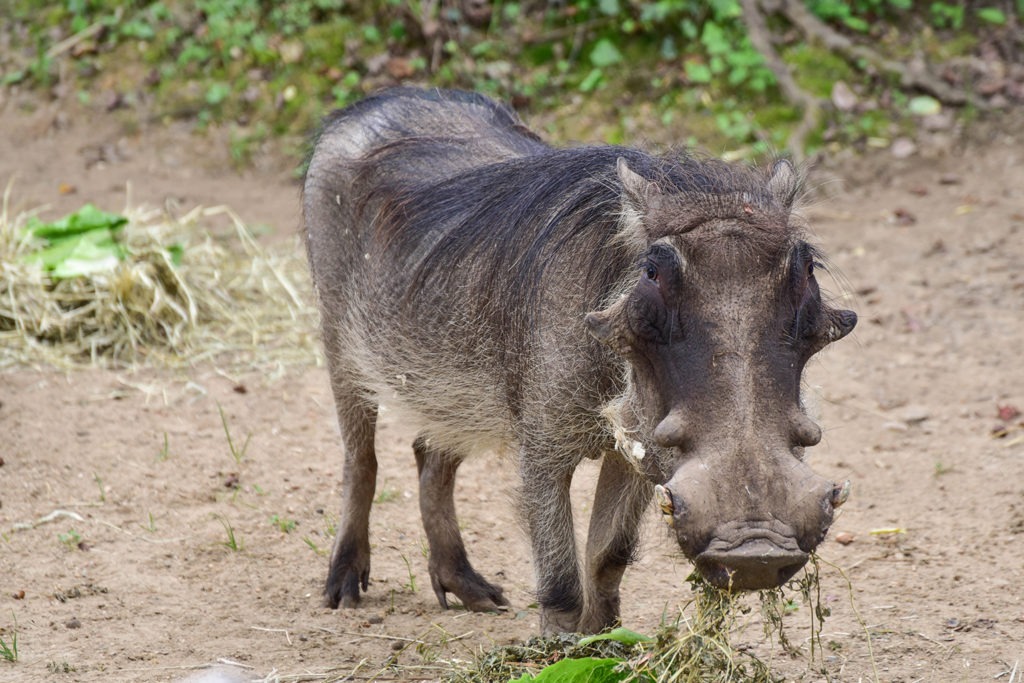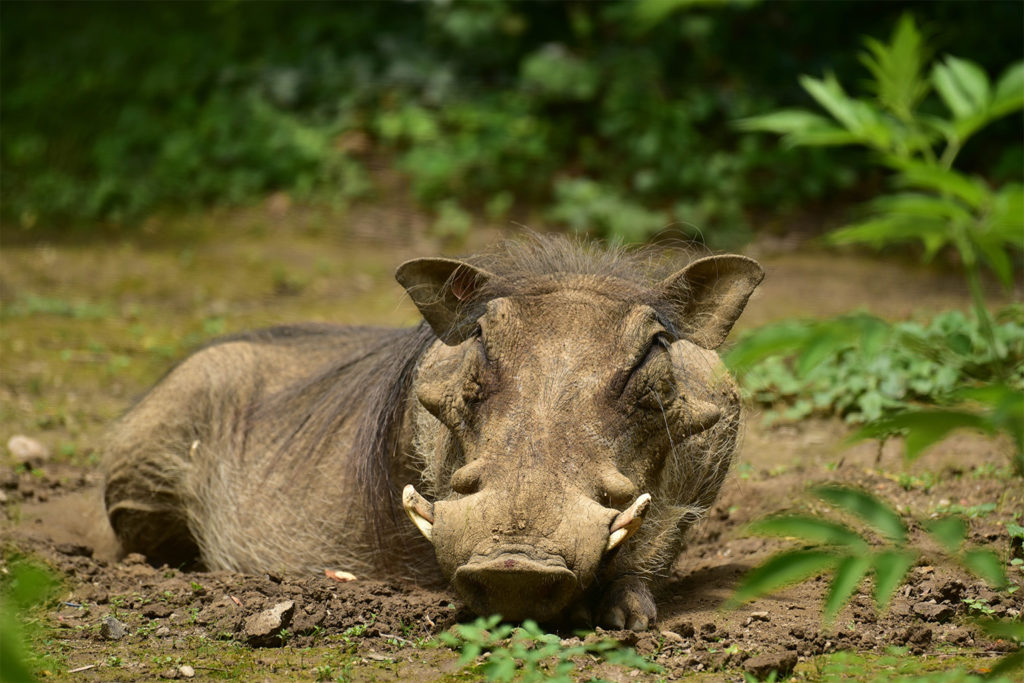Overview
“Where I live”
The common warthog is a species of wild pig native to Africa. They are commonly seen in Africa’s open grasslands but also seek out denser vegetation. Warthogs can also survive in desert fringes. Check out the warthog exhibit in the African Journey section of The Maryland Zoo.
“How I live there”
The warthog has the face and head of a ferocious fighter – large, and decorated with warts and tusks. Looks can be deceiving though. The warthog generally does not behave as ferociously as it appears. It is an omnivore that quietly goes about rooting for, well, roots. It does most of its foraging at dusk and at night. It uses its huge tusks to root up the roots. It also eats grasses, berries and other fruits, bark, eggs, small mammals, reptiles, and even carrion. It kneels down on its thick and calloused knees (who needs kneepads?) to graze more easily.
Male warthogs prefer to live alone while female warthogs live in groups with offspring called soundings. Warthogs commonly occupy abandoned aardvark burrows.
If a warthog comes across a watering hole, it will drink and may also take a nice wallow. Rolling around in mud and water helps the warthog to rid its skin of parasites and to get a nice coating of mud that acts as camouflage, natural bug repellent and sunscreen.
Warthogs are named for the four wart-like protrusions on their face. These are really skin-covered tusks. It’s not entirely clear what purpose they serve, other than being beauty marks. It could be that the warts offer protection to a warthog’s eyes and jaws when it has to defend itself from a predator or spar with a rival (males, anyway).
“Making my mark”
When warthogs root and graze in an area, it’s hard to miss. They have a way of upturning fields with their snouts and tusks. This practice may annoy and upset local farmers, but it also has the positive effect of turning soil.
Because of their propensity for ravaging crops if they can get their tusks on them, African farmers often hunt warthogs as pests. They are also hunted for their ivory tusks. Warthogs have adapted to the threat by foraging mostly at night when people are usually asleep!
“What eats me”
Warthogs need to watch out for predators such as lions, leopards, crocodiles, hyenas and humans. They would rather flee than fight and are surprisingly fast. They can run up to 35 mph. They can fight as well and will defend themselves with their formidable tusks when cornered or challenged.
Raising Young
Male warthogs spar to establish dominance and to win mates. Both males and females will pair with many partners. Females give birth to three piglets per litter on average. Mother warthogs nurse and care for their offspring until they are about 21 weeks of age, at which point they have to fend for themselves.
Conservation
While warthogs are not currently endangered, they are threatened in some areas by over hunting and their populations are in decline in many parts of Africa.
Taxonomy
- Kingdom: Animalia
- Phylum: Chordata
- Subphylum: Vertebrata
- Class: Mammalia
- Order: Artiodactyla
- Family: Suidae
- Genera: Phacochoerus
- Species: africanus



